“Maestro “ Production Designer Kevin Thompson on Building the Bernstein’s Lives From Concert Halls to Connecticut
Bradley Cooper’s Maestro follows the arc of Leonard Bernstein’s career, but his rise from a lucky break at Carnegie Hall to becoming a household name as a composer and conductor is secondary in the film to the development of his relationship with his actress wife, Felicia Montealegre. The couple had three children and split their time between the Upper West Side Manhattan, where they eventually settled in an apartment in the Dakota, and a country home in Fairfield, Connecticut. Throughout their marriage, Bernstein also maintained off-and-on relations with men, which the film portrays primarily in reference to how this affected his life with Felicia.
Given the significance of Lenny’s (as he’s mostly called throughout the film) personal life to the script, the couple’s home environments are among Maestro’s most significant locations. Cooper and his production designer, Kevin Thompson (Scenes From a Marriage, Birdman), were able to shoot in the Bernsteins’ Fairfield home, which is still owned by their children, and then built versions of the composer’s early Carnegie Hall studio and apartment, his first home with Felicia, and their apartment together in the Dakota. For Thompson, it was important for their domestic environments to be as authentic as possible “so that you could intimately feel the growth of the relationship,” he said. “We also wanted to lyrically move from period to period without stamping a date or saying, ‘we’re in a different decade.’”
Shooting Bernstein’s public life, meanwhile, was done on location and entailed bringing iconic venues like Carnegie Hall to period-correct glory. We had the chance to speak with Thompson about recreating Bernstein’s performance venues, building a seven-room Dakota-style apartment, and prepping for both black and white film stock and color.
How did you recreate the Bernsteins’ Dakota apartment?
When we got to the Dakota, it was a very heavy, emotional period of their life. The kids were grown and they were starting to have conflicts. Bradley and I went to the actual apartment, which is lived in by somebody else now. It’s been completely redecorated, but the architectural elements were all the same. Being a New Yorker and also a previous architect, it was very important for me to get this legendary feeling of this apartment and what was going on at the time they lived there, in terms of culture and the kinds of people they saw. Also, the detail of how they lived comfortably, but they had suddenly gotten more wealth, and they could afford this grander scale. We luckily got into the actual apartment, so Bradley and I could talk about the layout of the floor plan. We wanted to get it really close, but we also had to make it work for how we wanted to shoot the party scene, the Thanksgiving scene, and the big Snoopy fight in the bedroom. We wanted the authenticity of feeling like we were actually in the Bernstein apartment and on the Upper West Side for those people who would care or know about that. And Bradley was very specific about how he wanted to record sound. At the party, he wanted it to feel real. It was always many microphones and many people talking over one another.
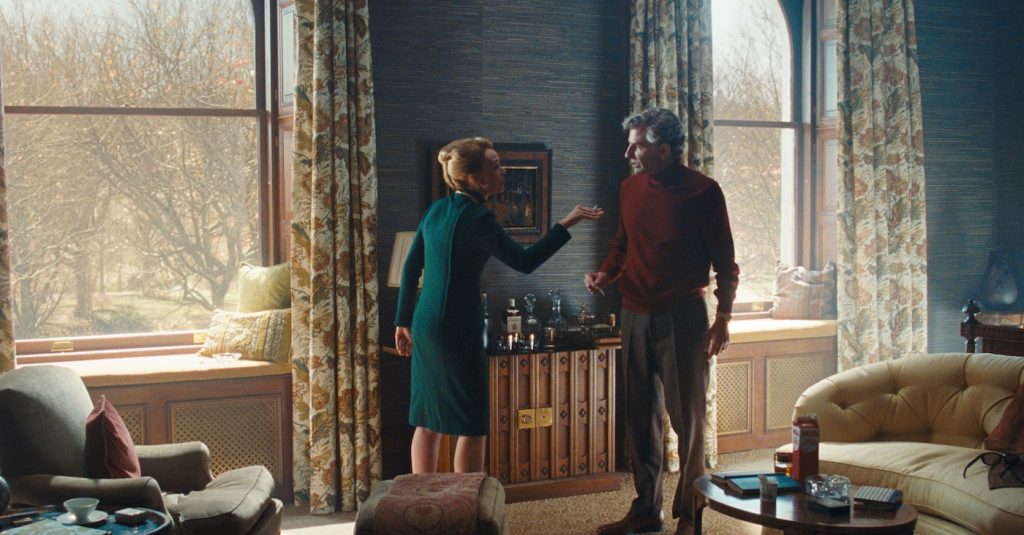
What did the build wind up encompassing?
We built 360 degrees around, and we also built that corridor where Felicia comes out and finds Lenny getting into the elevator with that young man. We actually painstakingly built this seven-room apartment with a full bedroom and hallways. The details of the moldings and the fireplaces and the windowsills and the heights of the windows were really specifically copied from the actual apartment. And then we decorated it in the style that Felicia was doing at that time, which was an eclectic mix of things layered with items from their previous apartments, but with a very lived-in, comfortable feeling at the same time. And then, because we were introducing color, I worked very closely with Mark Bridges, the costume designer, to say what decade we were in but somewhat quietly. We used a 70s palette and 70s design for the clothing, hair, makeup, and things like that, but it all needed to be woven together in terms of the colors of the apartment and the colors of the wardrobe.
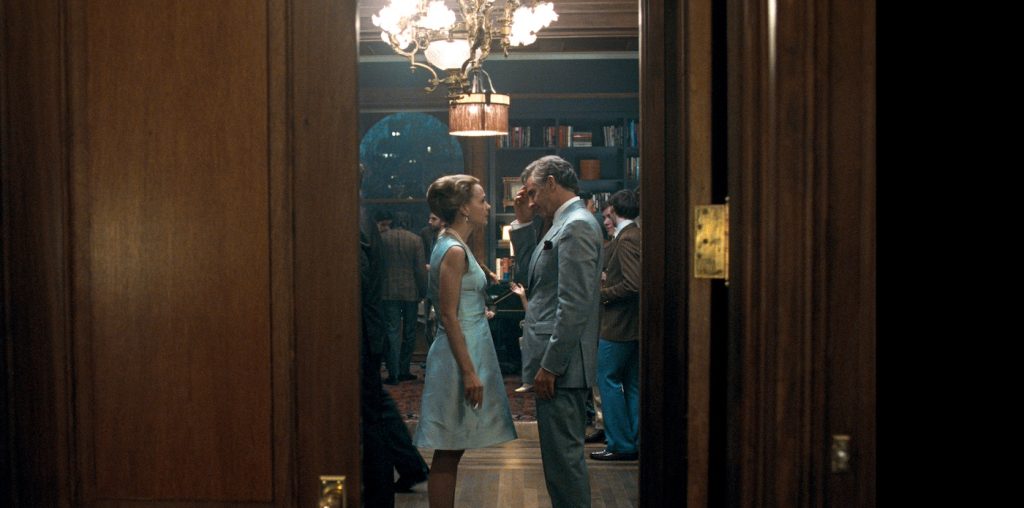
What kind of archives and references did you use during this process?
There was a good article in Architectural Digest about the family and the apartment. There were photos and references that the family had, personal things. And the Bernstein children were available to us so we could ask questions about what they remember. It’s a very well-documented life because they were in the public world. It wasn’t hard to research the types of pianos they had at the Dakota. They had a harpsichord in the study. We copied light fixtures. In the middle of the study, there was a hanging fixture that had fringe on it that we recreated because it seemed like a touchstone people might be able to identify. Little Easter eggs like that, for people who might understand or remember the era of their parents or friends and what it felt like on the Upper West Side.
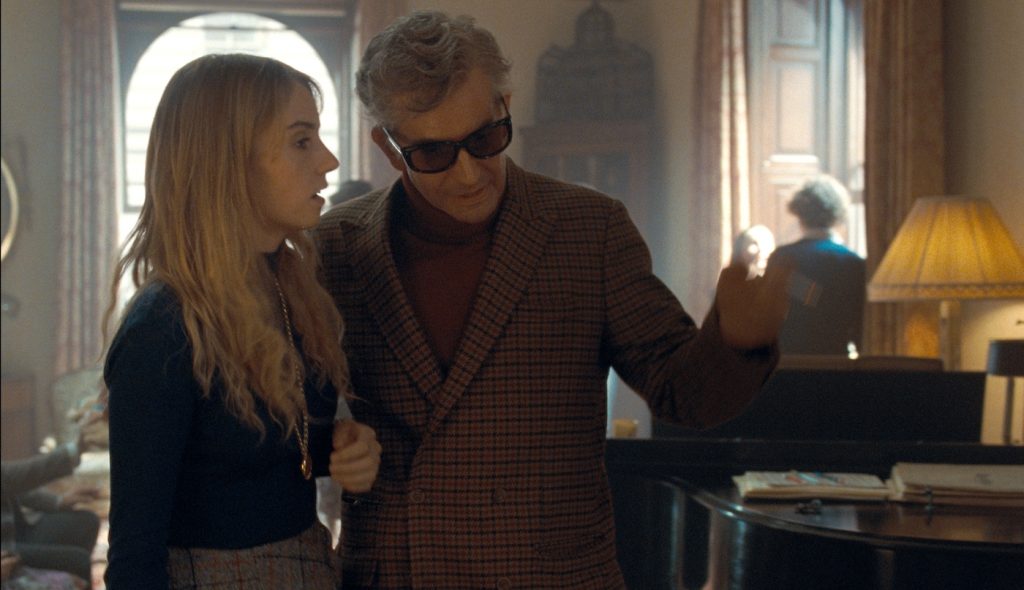
Were any of the other home builds as complex?
That first Carnegie Hall loft/music studio/apartment, where he wakes up and throws the curtains open—that was a scene that was one of the first things we talked about. It went through many incarnations because there were actual studios similar to that that were on the top of Carnegie Hall, and we wanted to reflect the authenticity of that space, but we also needed to do this very elaborate camera move, which was all with one big camera arm, taking him out of the apartment and into the hallway, and then cutting when we got to the door of the box of Carnegie Hall. So it went through many incarnations, trying to get the window size right, the height of the loft, sections of ceiling had to be taken out. In the end, I think it was one of the things we worked most on in terms of evolving the design and detailing so it would work for the shot. I find it really gratifying because it’s pretty much exactly what Bradley conceived at the beginning. It was a wonderful, interesting process for me to go through.
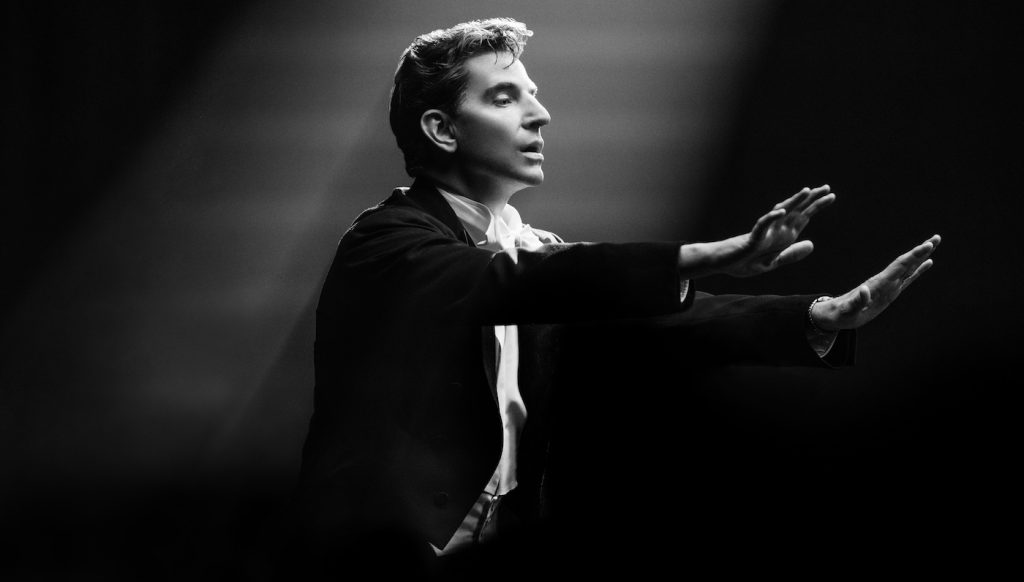
Shooting in the Bernsteins’ actual Fairfield, CT, home must have been another experience entirely.
We didn’t know what it was going to be like. When I first went there with Bradley, we saw the grounds and felt the ghosts of both Lenny and Felicia. Since their deaths, the family has kept it for themselves pretty much intact, so it was a valuable resource to understand the intimacy of the details of how they lived. It was really comfortable. It was bucolic. They had beautiful gardens and a functioning vegetable garden. But they also had recreation, with the pool. Lenny’s studio was a little cottage off the back barn that we recreated because that had been turned into an apartment. But a lot of the house had the original wallpaper that Felicia picked out. She was pretty interested in painting, and she was pretty prolific. She never thought of herself as a great painter, but it was how she fulfilled her creative needs, and a lot of that evidence was there. And then all the little personal things — the kids were still living the same way, and they had updated things, but all we really needed to do was curate how we wanted the layout of furniture, we added some things, we recovered some things to refreshen fabric colors, and we curated for the time period all the technology out. But architecturally, we didn’t have to change much to make it feel like it was authentic to the period. It was amazing.
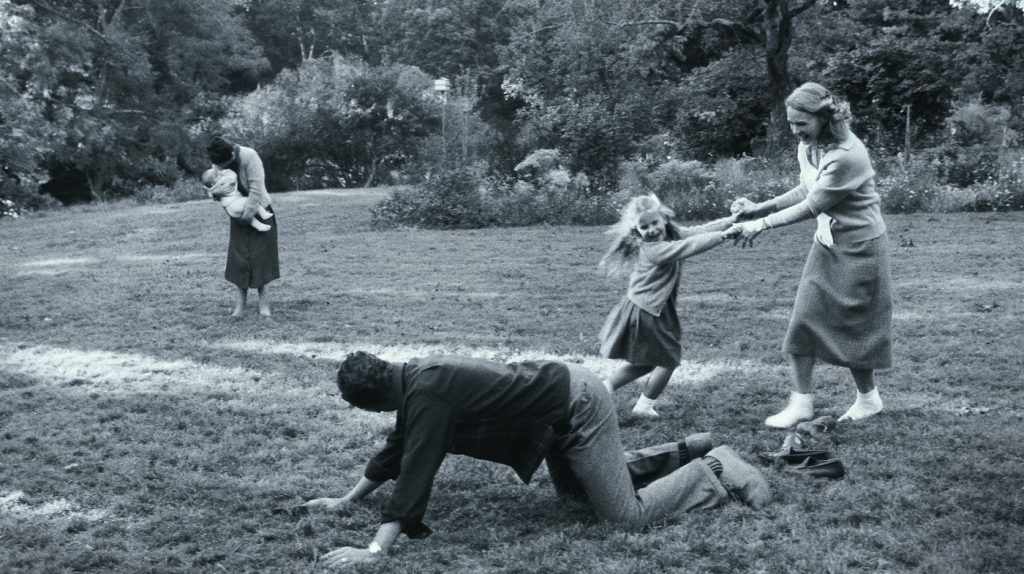
Is it technically difficult to shoot in a historic family home like this one?
I think we were really sensitive, respectful, and grateful for the opportunity to be there. Everyone working on the film in my department knew what it meant to be at Leonard Bernstein’s house, to see the piano that his piano teacher gave him when he was a student, and to know where his studio was and how he got away from the family at certain points. It was a skeletal crew, partly because of coming out of Covid, but also, we really reduced the crew as much as we could so it wasn’t like the big circus came to town and we destroyed the property.
How did you approach key performance venues?
I always felt like we were bookending the movie with the authentic Carnegie Hall, which is where he got his start when Bruno Walter was ill that one day, and Ely Cathedral in the UK, which is where the big Mahler piece takes place. It was important for Bradley and me to have real spaces for those two things. For all the performance pieces, but both Ely and Carnegie Hall, we had obvious period things like backstage dressing, the chairs, the music stands, and the period music. All the performers had to be in period clothing, hair, and accessories. But we were fortunate that we were dealing with Carnegie Hall and Ely, which are both historic landmarks, so it wasn’t like there was a lot to remove. We had to architecturally deal with technology again, with exit signs and things like that. We wanted it to be period correct, but there was no question about how to design it because it was like, just bring it back to the way it was the day that concert took place.
How did having part of the film in black and white affect your approach to those scenes?
From the beginning, Bradley was committed to shooting on black and white film and color film and not doing digital. We tested film stock to find what we wanted to use, and then we tested fabrics and color charts to get an idea of how they reacted to the film stock. Some colors in the mid-tones would just all look alike. Any reds would just go to black. We had guides for anybody who was working with color on what to use, what not to use, and how they reacted to the film. It was really a fun exercise and also a great collaborative effort with wardrobe and the art department. And because so much of the film is in black and white, the color stands out more when you go to color. You have to be really careful choosing the palette for the decade and making it tell you where we are in time without stamping it ‘1970!’ We always wanted it to be in the background and have it be about the emotional core of the scene rather than the design.
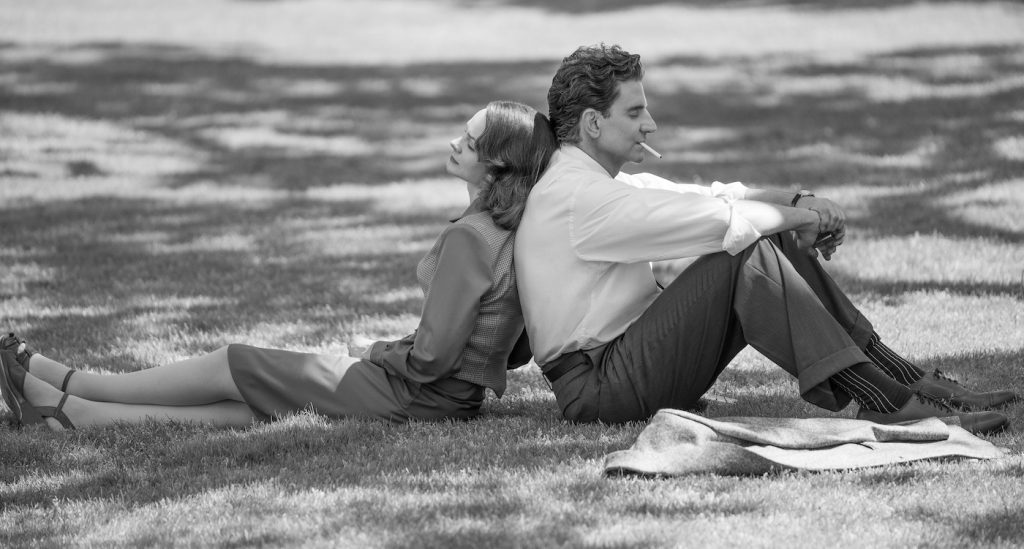
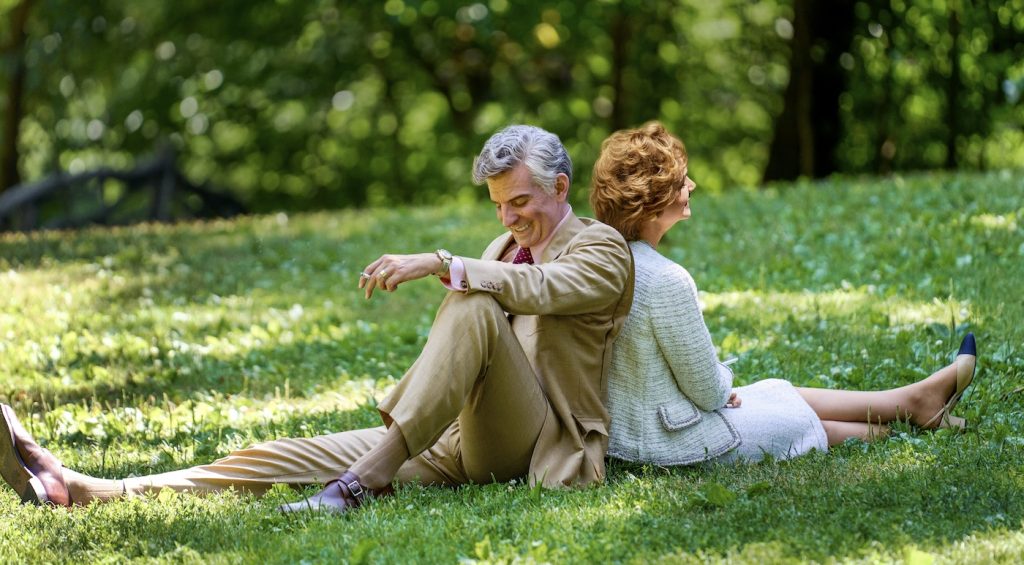
in Maestro. Cr. Jason McDonald/Netflix © 2023.
For more on Maestro, check out these stories:
“Maestro” Sound Mixer Steven Morrow on Recreating Mahler’s “Resurrection” at the Ely Cathedral
“Maestro” Editor Michelle Tesoro on Orchestrating the Epic Bernstein Love Story
“Maestro” Cinematographer Matthew Libatique Makes Music With the Camera
Featured image: Maestro. (L to R) Bradley Cooper as Leonard Bernstein (Director/Writer/Producer) and Carey Mulligan as Felicia Montealegre in Maestro. Cr. Jason McDonald/Netflix © 2023.



